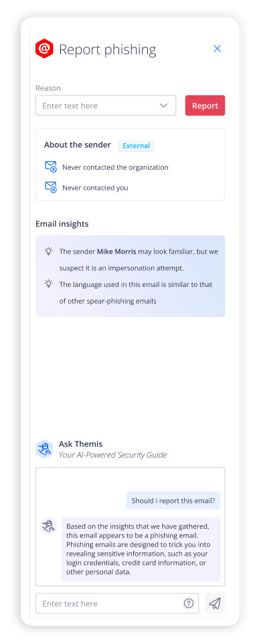Table of Contents
Generative AI Explained
Generative AI is a subset of artificial intelligence that focuses on the development of algorithms and models capable of generating new data that resembles existing patterns and distributions. Unlike traditional AI systems that are used for prediction and classification, generative AI aims to create new content, such as images, texts, music, and more, by learning from vast amounts of existing data. It uses techniques like Generative Adversarial Networks (GANs), Variational Autoencoders (VAEs), and other deep learning architectures to accomplish its tasks. The potential applications of generative AI span numerous domains, including art, content creation, medicine, cybersecurity, and more.
What are the benefits of Generative AI?
Generative AI offers several advantages that have significant implications across various industries:
-
Data Augmentation: It can generate synthetic data that can be used to augment training datasets, improving the performance and robustness of AI models.
-
Creative Content Generation: Generative AI can produce original content like images, music, and text, inspiring new possibilities in creative fields.
-
Simulation and Testing: It enables the creation of realistic simulations, facilitating testing and experimentation without real-world risks or costs.
-
Personalization: In marketing and e-commerce, generative AI can create personalized product recommendations and advertisements based on individual preferences.
-
Anomaly Detection: By learning the normal patterns of data, generative AI can identify anomalies or outliers, which is valuable in cybersecurity and fraud detection.
-
Imitating Styles and Characteristics: It can imitate the style of a particular artist, writer, or musician, leading to new forms of art and expression.
How are cyber criminals using Generative AI?
Cyber criminals have begun exploiting the capabilities of generative AI to launch more sophisticated and convincing attacks. Some ways they employ generative AI include:
-
Spear Phishing Emails: Attackers can use generative AI to analyze publicly available data and create spear-phishing emails that appear highly authentic. These emails may impersonate known contacts, contain personalized details, and craft convincing narratives, making them difficult for traditional email filters to detect.
-
Fake News and Content Manipulation: Generative AI can be used to create fake news articles, videos, or audio clips, spreading misinformation and causing reputational damage.
-
Identity Theft: By analyzing patterns from social media and other online sources, generative AI can assist in forging convincing identities, leading to identity theft.
-
Social Engineering Attacks: AI-generated voice synthesis can be used to mimic the voices of individuals in voice-based social engineering attacks.
-
CAPTCHA Bypassing: Generative AI models can be employed to defeat CAPTCHA mechanisms, enabling automated attacks on websites and services.
Generative AI in Cybersecurity
In cybersecurity, generative AI is utilized for defensive purposes to enhance threat detection and response:
-
Anomaly Detection: Generative models can establish baselines of normal network behavior and detect deviations that indicate potential cyber threats or intrusions.
-
Malware Analysis: By generating variations of known malware samples, generative AI helps in developing robust malware detection and classification algorithms.
-
Password Cracking: Attackers can use generative AI to develop more advanced algorithms for password cracking, necessitating the use of stronger authentication methods.
-
Security Testing: Generative AI assists in creating realistic and diverse test datasets to evaluate the resilience of AI-based security systems.
IRONSCALES uses Generative AI for Email Security
IRONSCALES, a leading provider of email security solutions, employs cutting-edge generative AI technology to enhance its phishing email detection and employee empowerment capabilities. By using generative AI, IRONSCALES provides a mailbox-level AI assistant and simulates advanced phishing attacks.
Themis Co-pilot for Outlook
Empower employees to fight phishing with GPT-powered chat
Mobilize your employees as a critical line of defense with the ability to question suspicious emails and gain real-time actionable insights with a GPT-powered chat assistant to allow employees to confidently report threats and take a more active part in threat hunting directly from their inbox.

Themis, AI-powered Virtual SOC Analyst
GPT-Powered Phishing Simulation Testing
Launch personalized AI-generated spear phishing simulation campaigns in minutes
Boost your employees' awareness of socially engineered phishing attacks without the operational overhead using GPT-powered spear phishing capability from IRONSCALES. Leveraging PhishLLM™, a proprietary LLM model, instantly generates phishing simulation testing campaigns personalized to employees and the advanced phishing attacks they may encounter.

GPT-Powered Phishing Simulation Testing
In conclusion, generative AI holds immense potential for various industries, but it also introduces new challenges in cybersecurity. While it offers numerous benefits, it is essential for organizations and individuals to remain vigilant and implement countermeasures to defend against potential malicious uses of this technology.
Learn more about IRONSCALES advanced anti-phishing platform here. Get a demo of IRONSCALES™ today! https://ironscales.com/get-a-demo/
Explore More Articles
Say goodbye to Phishing, BEC, and QR code attacks. Our Adaptive AI automatically learns and evolves to keep your employees safe from email attacks.

/Concentrix%20Case%20Study.webp?width=568&height=326&name=Concentrix%20Case%20Study.webp)












